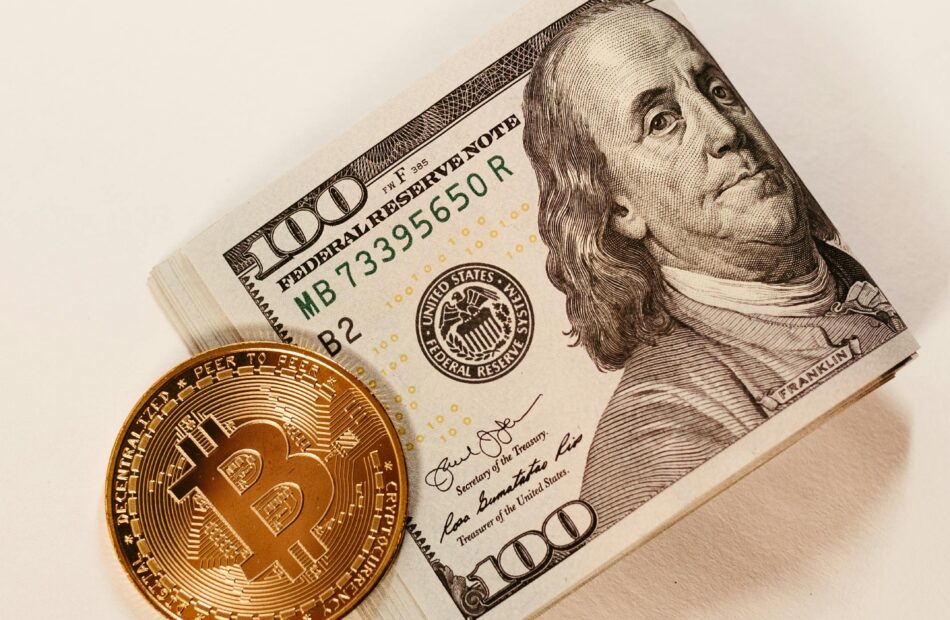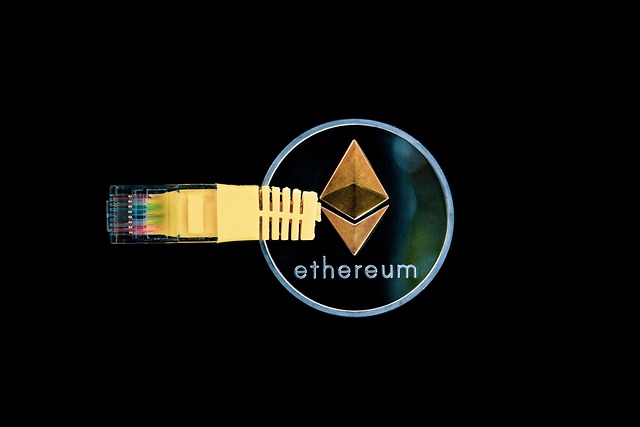Crypto ‘uninvestable’ if exchanges ignore manipulation: DeFiance CEO
A crypto investment executive said the biggest problem with digital asset markets is price manipulation, claiming that collusion between market makers and exchanges distorts token prices. Arthur Cheong, founder of crypto investment firm DeFiance Capital, said in an X post that market makers and crypto projects work together to create artificial prices that can be sustained for long periods. Cheong wrote: “You don’t know whether the price is a result of organic demand & supply or simply due to projects and market makers colluding to fix the price to achieve other objectives.”He added that if the industry’s players don’t step up and improve the situation, a big part of the crypto market will remain “uninvestable for the foreseeable future.”Centralized exchanges turning a “blind eye” Cheong said it was strange that centralized exchanges (CEXs) are “turning an absolute blind eye” to the issue. He described the altcoin market as a “lemon’s market,” a term in economics that describes a market where low-quality products drive out the good due to information asymmetry.In addition, Cheong described most token generation event pricing in 2025 as an “absolute joke” where the assets’ prices went down by 70% to 90% a few months after listing. “Anyone that bought is down massively,” Cheong added. Related: Binance, KuCoin, MEXC report service issues due to AWS network interruption88% of crypto tokens listed on Binance in 2025 declined after listing Data compiled by crypto analyst Miles Deutscher showed that among crypto tokens listed this year on the trading platform Binance, only 3 out of 27 are performing well. This means that 88% of the tokens have declined since listing. The price drops ranged from 19% up to 90%. Deutscher said this was the reason why retail investors were quitting. Only 3 out of 27 tokens listed in Binance in 2025 are in the green. Source: Miles Deutscher A community member responded to the data saying that this is where the industry is currently at. The X user added that they hoped Binance would realize starting at a high valuation wasn’t good for users. Binance co-founder Changpeng Zhao previously admitted that Binance’s listing process needs reform. On Feb. 10, the former Binance CEO said that the current system is flawed and suggested that CEXs should automate listings similar to how decentralized exchanges (DEXs) work. Magazine: New ‘MemeStrategy’ Bitcoin firm by 9GAG, jailed CEO’s $3.5M bonus: Asia Express
Can 3-month Bitcoin RSI highs counter bearish BTC price 'seasonality?'
Bitcoin (BTC) demands a breakout as a key leading indicator reaches its highest levels since January.Data from Cointelegraph Markets Pro and TradingView shows the relative strength index (RSI) hinting at more BTC price gains next.Bitcoin RSI breakout has days to “full confirmation” Bitcoin bull runs traditionally begin with telltale RSI signals, and on daily timeframes, conditions are ripe for a classic BTC price rebound.As BTC/USD made lower lows over the past month, RSI began trending in the opposite direction, setting higher lows and attempting a type of bullish divergence.More recently, the daily RSI broke above the 50 midpoint, only to successfully retest it as support from above before making new multimonth highs.BTC/USD 1-day chart with RSI data. Source: Cointelegraph/TradingViewAmong those monitoring the topic is popular trader and analyst Rekt Capital.“Bitcoin has successfully retested red as support & the Daily RSI Higher Low continues to maintain itself as well,” he commented alongside a chart in an X post this weekend.“Growing signs of a maturing Bullish Divergence here, with price just below the key Price Downtrend (blue).”BTC/USD 1-day chart with RSI data. Source: Rekt Capital/XRekt Capital also reported that RSI trends suggested a long-term BTC price floor at around $70,000.Meanwhile, fellow analyst Kevin Svenson captured similarly promising signals on weekly RSI this week.“Once confirmed, weekly RSI breakout signals have proven to be among the most reliable macro breakout indicators,” he told X followers. “6 Days until full confirmation.”BTC/USD 1-week chart with RSI data. Source: Kevin Svenson/XAs Cointelegraph reported, another key breakout currently under the microscope for Bitcoin market participants involves a downward-sloping trendline in place since January’s all-time highs.April BTC price performance far below medianCountering the bullish anticipation is an analysis focusing on the troublesome macroeconomic conditions in which Bitcoin now finds itself.Related: Bitcoin price metric that called 2020 bull run says $69K new bottomThe ongoing US trade war and risk-asset rout make for an unlikely influx of capital to BTC, which has closely followed stocks while gold sets repeated all-time highs.In his latest forecast for April, network economist Timothy Peterson saw little reason to celebrate.Uploading a chart of the median yearly price path for BTC/USD, he concluded that this year was a firm underperformer.“Half the days are above the blue line and half are below it. This April is obviously a ‘below’ month,” part of accompanying commentary read.“That is almost certainly not going to change, given the level of interest rates and other risk factors at work in the market and economy.”BTC price seasonality. Source: Timothy Peterson/XOther perspectives likewise see a lackluster April before bullish undercurrents catch up with Bitcoin, these in the form of record global M2 money supply and a weakening US dollar index (DXY).This article does not contain investment advice or recommendations. Every investment and trading move involves risk, and readers should conduct their own research when making a decision.
Bitcoin shows growing strength during market downturn — Wintermute
Bitcoin is showing growing resilience to macroeconomic headwinds compared with traditional financial markets, according to an April 14 report from crypto market maker Wintermute.The report noted that Bitcoin (BTC) has held up relatively well during the ongoing market downturn, even as the S&P 500 and Nasdaq dropped to their lowest levels in a year and bond yields surged to highs that had not been seen since 2007.“Bitcoin’s decline was comparatively modest, revisiting price levels from around the US election period,“ Wintermute wrote.According to Wintermute, “This marks a notable shift from its historical behavior in crisis situations.” In the past, Bitcoin’s losses were considerably greater than those of traditional finance indexes. The shift highlights Bitcoin’s “apparent growing resilience amid macroeconomic turbulence.“Founder of Obchakevich Research, Alex Obchakevich, told Cointelegraph that he expects this to be a temporary trend:“As the trade war intensifies, Bitcoin may return to the list of risky assets. Because investors will most likely look for salvation in gold.“Obchakevich said that factors that caused the stability of Bitcoin were growing institutional interest through exchange-traded funds (ETFs) and the promotion of Bitcoin as digital gold due to its decentralization and independence.Related: Bitcoin traders target $90K as apparent tariff exemptions ease US Treasury yieldsA change in Bitcoin market dynamicsOver the past week, Bitcoin’s price increased by 7% to $83,700 — later reaching nearly $86,000 at the time of publication. This growth occurred as the Consumer Price Index (CPI) rose by 2.4% year-over-year, with a month-over-month decline of 0.1% — the first monthly decrease since May 2020. This signals that inflation is cooling off.Year-over-year CPI percentage change. Source: US Bureau of Labor StatisticsFurthermore, the Producer Price Index (PPI) rose 2.7% year-over-year in March. The same metric stood at 3.2% in February, also showing signs of disinflationary pressures. Still, according to Wintermute, the trend may soon reverse:“Despite this progress toward the Fed’s 2% inflation target, the recent escalation in global trade tensions introduced new potential inflationary risks, which are not yet reflected in March’s data.”Monthly PPI percentage change. Source: US Bureau of Labor StatisticsRelated: Trade wars could spur governments to embrace Web3 — TruebitMore market turmoil expectedBitwise analyst Jeff Park recently argued that US President Donald Trump’s trade policies will create worldwide macroeconomic turmoil and short-term financial crises that will ultimately lead to greater adoption of Bitcoin. He said that we should expect an inflation increase:“The tariff costs, most likely through higher inflation, will be shared by both the US and trading partners, but the relative impact will be much heavier on foreigners. These countries will then have to find a way to fend off their weak growth issues.”Wintermute explained that the ongoing trade war heightens the risk of increased inflation and economic slowdown. Prediction market Kalshi traders recently placed the odds of a recession hitting the US this year at 61%, and JPMorgan sees a 60% likelihood.Magazine: Bitcoin eyes $100K by June, Shaq to settle NFT lawsuit, and more: Hodler’s Digest, April 6 – 12
Binance, KuCoin, MEXC report service issues due to AWS network interruption
Binance, KuCoin, MEXC and other exchanges and wallet providers have been experiencing service issues due to a significant network interruption by Amazon Web Services (AWS).Centralized cryptocurrency exchanges (CEXs) were hit by an AWS data center outage, which reported “connectivity issues” that affected at least 12 of its services on April 15.AWS Service health. Source: Health.aws.amazon“We are seeing initial signs of recovery but continue to monitor and work toward full recovery. Other AWS services are also impacted by this issue, and are also observing recovery. We will provide another update within the next 30-60 minutes,” AWS said in an April 15 update.Binance was among the first to report issues with its services.“We are aware of an issue impacting some services on the #Binance platform due to a temporary network interruption in the AWS data center,” wrote Binance in an April 15 X post, adding that “some orders are still successful, but some are failing. If users failed, they may keep retrying.”Source: BinanceBinance has since restored services, including user withdrawals, thanks to the exchange’s quick collaboration with AWS, a Binance spokesperson confirmed to Cointelegraph.Related: Kraken rolls out ETF and stock access for US crypto tradersOther large exchanges, including KuCoin and MEXC, also reported service interruptions.“Due to a large-scale network outage with AWS services, our platform is currently experiencing temporary disruptions,” KuCoin said in an April 15 X post.Source: MEXCOn MEXC, users of the mobile app and web platform were warned of “abnormal candlestick charts, failed order cancellations” and asset transfer delays. However, users’ assets “remain fully secure,” the exchange said in an April 15 X post.Related: Google to enforce MiCA rules for crypto ads in Europe starting April 23AWS provides cloud infrastructure for centralized exchanges that can handle high transaction volumes with low latency in trading orders. AWS is used by some of the biggest crypto exchanges, including Coinbase, Crypto.com, Huobi, BitMEX and Kraken.The effect of the AWS outage may be perceived as another signal of the vulnerability of centralized infrastructure providers, which may suffer cascading effects due to a single point of failure.This is a developing story, and further information will be added as it becomes available.
US has ‘countless’ ways to bolster Bitcoin reserve: Bo Hines
The US is exploring many ways to increase its Bitcoin reserve without taxpayer dollars, including through tariff revenue and revaluing the government’s gold certificates, according to the executive director of the Trump administration’s crypto council.“We’re looking at many creative ways, whether it be from tariffs, there’s literally countless ways in which you can do this,” Bo Hines of the Presidential Council of Advisers for Digital Assets said in a recent interview with Professional Capital Management CEO Anthony Pompliano.Hines said the Treasury could revalue its gold certificates, valued at $43 per ounce, to the current market price of $3,200 per ounce, creating a paper surplus to fund Bitcoin purchases without selling gold.“Everything is on the table, and like we’ve said, we want as much as we can get, so we’re going to make sure that no stone is unturned,” Hines said in the interview, which aired on April 14.🇺🇸 LATEST: Executive Director of Digital Assets Bo Hines said the US government may buy Bitcoin using tariff revenue. pic.twitter.com/Gfc2HiEJoL— Cointelegraph (@Cointelegraph) April 15, 2025The Bitcoin Reserve will initially comprise assets forfeited in government criminal cases but allow for the government to develop budget-neutral strategies for acquiring additional Bitcoin. During the interview, Hines said the White House is also developing a digital asset framework outlining how the US plans to support crypto innovation and promote US dollar stablecoins worldwide.“It’ll provide clarity on many aspects of this space, whether it be from tokenization to staking, all sorts of things,” Hines said, adding that the Trump administration has been moving rapidly to make America the “crypto capital of the world.”Related: Bitcoin takes back seat as Trump, Bukele focus on trade and immigration“We’re moving at tech speed, it’s like we’re a startup in this building,” Hines said. “We’ll continue moving this along quite quickly.”The report Hines referred to is expected to be published in late July or August.No mention of Trump’s crypto venturesHines wasn’t asked to address some of Trump’s potential conflicts of interest in the crypto space, including the controversial Official Trump (TRUMP) memecoin and the Trump family’s business venture with World Liberty Financial — which have been raised by the opposition party. I watched this interview in full.Pomp didn’t ask about:1. How much Bitcoin the US government owns, and the internal audit the Trump administration told us that should have already been completed 2. Donald Trump’s growing list of conflicts of interests in the cryptocurrency… https://t.co/bVnXBkCmK1— Pledditor (@Pledditor) April 14, 2025Last month, House Representative Gerald E. Connolly referred to the TRUMP token as a “money grab” that resulted in Trump-linked entities cashing in on over $100 million worth of trading fees.Representative Maxine Waters also criticized Trump’s memecoin on Jan. 20, referring to a rug pull while claiming the launch represented the “worst of crypto.”The White House’s AI and crypto czar, David Sacks, said the TRUMP memecoin was nothing more than a collectible.Hines also wasn’t asked whether the US completed an internal audit of its Bitcoin (BTC) holdings — a task that was supposed to be completed within 30 days of US President Donald Trump’s March 6 executive order establishing the Strategic Bitcoin Reserve.Magazine: Trump’s crypto ventures raise conflict of interest, insider trading questions
Meta gets EU regulator nod to train AI with social media content
Tech giant Meta has been given the green light from the European Union’s data regulator to train its artificial intelligence models using publicly shared content across its social media platforms.Posts and comments from adult users across Meta’s stable of platforms, including Facebook, Instagram, WhatsApp and Messenger, along with questions and queries to the company’s AI assistant, will now be used to improve its AI models, Meta said in an April 14 blog post.The company said it’s “important for our generative AI models to be trained on a variety of data so they can understand the incredible and diverse nuances and complexities that make up European communities.”Meta has a green light from data regulators in the EU to train its AI models using publicly shared content on social media. Source: Meta“That means everything from dialects and colloquialisms, to hyper-local knowledge and the distinct ways different countries use humor and sarcasm on our products,” it added.However, people’s private messages with friends, family and public data from EU account holders under the age of 18 are still off limits, according to Meta.People can also opt out of having their data used for AI training through a form that Meta says will be sent in-app, via email and “easy to find, read, and use.”EU regulators paused tech firms’ AI training plansLast July, Meta delayed training its AI using public content across its platforms after privacy advocacy group None of Your Business filed complaints in 11 European countries, which saw the Irish Data Protection Commission (IDPC) request a rollout pause until a review was conducted.The complaints claimed Meta’s privacy policy changes would have allowed the company to use years of personal posts, private images, and online tracking data to train its AI products. Meta says it has now received permission from the EU’s data protection regulator, the European Data Protection Commission, that its AI training approach meets legal obligations, and the company continues to engage “constructively with the IDPC.”“This is how we have been training our generative AI models for other regions since launch,” Meta said.“We’re following the example set by others, including Google and OpenAI, both of which have already used data from European users to train their AI models.”Related: EU could fine Elon Musk’s X $1B over illicit content, disinformationAn Irish data regulator opened a cross-border investigation into Google Ireland Limited last September to determine whether the tech giant followed EU data protection laws while developing its AI models.X faced similar scrutiny and agreed to stop using personal data from users in the EU and European Economic Area last September. Previously, X used this data to train its artificial intelligence chatbot Grok. The EU launched its AI Act in August 2024, establishing a legal framework for the technology that included data quality, security and privacy provisions. Magazine: XRP win leaves Ripple a ‘bad actor’ with no crypto legal precedent set
Northern Marianas vetoes bill for Tinian to launch its own USD stablecoin
The governor of the Northern Mariana Islands, a small Pacific US territory just north of Guam, has killed the legislation that would have allowed one of the territory’s local governments to launch a fully backed US dollar-pegged stablecoin.In an April 11 letter seen by Cointelegraph, Northern Mariana Islands Governor Arnold Palacios said he vetoed the bill as it “presents several legal issues and may be unconstitutional.”Palacios’ letter said the bill, which largely dealt with issuing licenses to internet casinos, would regulate an activity that could not “be clearly restricted” to Tinian, a small island forming part of the territory that was hoping to launch a stablecoin.Tinian, which has just over 2,000 residents and a largely tourism-based economy, is governed by the local government, the Municipality of Tinian and Aguiguan, one of four municipalities in the Commonwealth of the Northern Mariana Islands.In February, Republican Northern Marianas Senator Jude Hofschneider led the introduction of the bill to amend a local Tinian law to allow internet-only casino licenses, which tacked on a provision allowing the Tinian treasurer to issue, manage and redeem a “Tinian Stable Token.” The four-member Tinian delegation to the Marianas legislature passed the bill in a unanimous vote on March 12.In vetoing the bill, Palacios didn’t comment on the proposed stablecoin, instead taking issue with its aim to police an industry that can cross jurisdictional boundaries, and said the measure lacked “robust enforcement measures to prevent illegal gaming activities.”A highlighted excerpt of Governer Palacios’ letter noting his reasons for vetoing the stablecoin and internet gambling bill Source: Northern Mariana Islands Governor’s OfficeTinian misses chance at beating WyomingThe bill’s passage could have seen Tinian’s government be the first US government entity to issue a stablecoin ahead of Wyoming, whose Governor Mark Gordon said in March that the state’s stablecoin could be ready for a launch in July.The stablecoin was to be known as the Marianas US Dollar (MUSD), which was to be fully backed by cash and US Treasury bills held in reserve by the Tinian Municipal Treasury, according to statements shared with Cointelegraph last month.Related: The GENIUS stablecoin bill is a CBDC trojan horse — DeFi execThe Tinian local government chose tech services firm Marianas Rai Corporation, based in the Commonwealth’s capital of Saipan, to exclusively provide the infrastructure to issue and redeem MUSD and develop its ecosystem.The token was slated to launch on the eCash blockchain, a network that rebranded from Bitcoin Cash ABC in 2021 and is a fork of Bitcoin Cash — a blockchain that split off from Bitcoin in 2017.The launch of MUSD was meant to coincide with Google’s $1 billion plan announced in April to route fiber-optic subsea cables from the mainland US through Tinian and onto Japan to improve internet connectivity.Magazine: Elon Musk’s plan to run government on blockchain faces uphill battle
Ethereum could be AI’s key to decentralization, says former core dev
There is a “huge opportunity” for Ethereum to become a decentralized partner in solving current problems with artificial intelligence platforms, according to a former core Ethereum developer. Ethereum’s “biggest mainstream moment is waiting in the wings with AI,” said Eric Connor on X on April 15. While AI is on a fast track to reshape almost every aspect of our lives, it is “plagued by black-box models, centralized data silos, and privacy pitfalls,” Connor continued. However, these problems create an opportunity for Ethereum to shine, he said.Ethereum offers transparency through verifiable smart contracts, decentralization against big tech monopolies, aligned incentives via token economies, and built-in micropayment infrastructure, he added. Smart contracts can provide transparent records of AI model training processes and data sources, addressing the “black box” problem.However, major AI players may resist open models “as they profit from secrecy and control,” he said. Demand for transparency, fairness, and security will only grow, and that’s where Ethereum “offers an alternative path,” he added. “Ethereum already has the ethos with openness, collaboration and trust minimization, things that ethical and accountable AI needs.”By proactively building the tooling, research and real-world use cases, Ethereum can give AI developers a reason to embrace decentralized approaches, “and that could deliver mainstream adoption far beyond finance,” Connor concluded. The next frontier for crypto will be decentralizing AI, Zain Jaffer, co-founder of Vungle, told Cointelegraph earlier this year. Connor left the Ethereum community in January amid growing leadership concerns to pursue interests in AI. AI agents on EthereumEthereum may also be important for the development of agentic AI — an emerging and experimental technology, according to a recent post on the Ethereum blog. AI agents are software programs that use artificial intelligence to autonomously perform tasks, make decisions, learn from data, and adapt to changes, and they are growing in numbers on Ethereum.The Ethereum blockchain provides key advantages for AI agents, including access to transparent, real-time blockchain data, true digital asset ownership, and the ability to execute transactions and interact with smart contracts, it noted.Related: The future of digital self-governance: AI agents in cryptoThe post highlighted three notable projects, which were Luna, an autonomous virtual influencer that controls its own onchain wallet; ¡` ×AIXBT, an AI agent providing crypto market analysis; and Botto, a decentralized autonomous artist creating NFTs guided by community voting.Meanwhile, projects like Bankr and HeyAnon are simplifying blockchain interactions through conversational interfaces, allowing users to manage wallets and execute transactions via simple chat commands.Magazine: Bitcoin eyes $100K by June, Shaq to settle NFT lawsuit, and more: Hodler’s Digest








